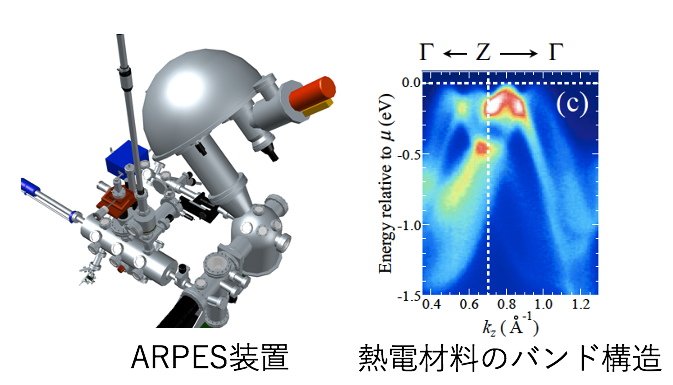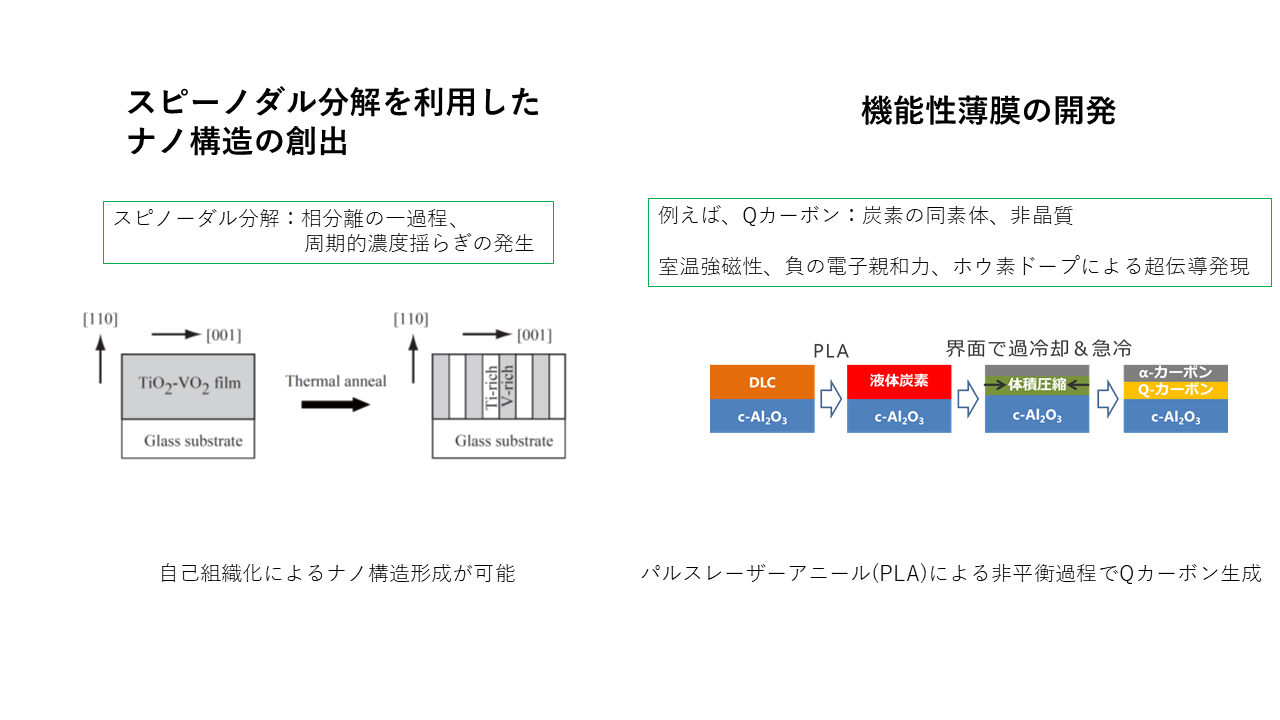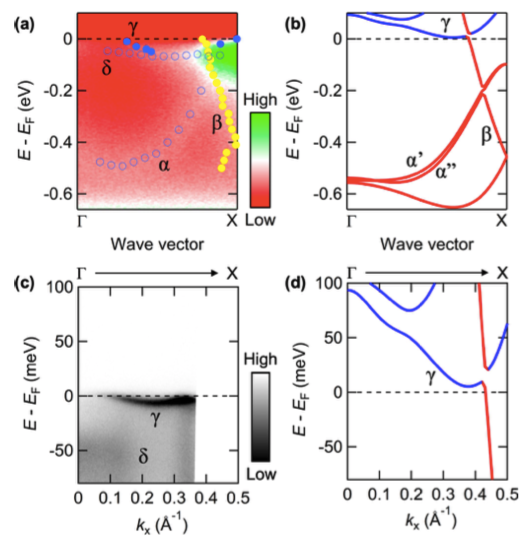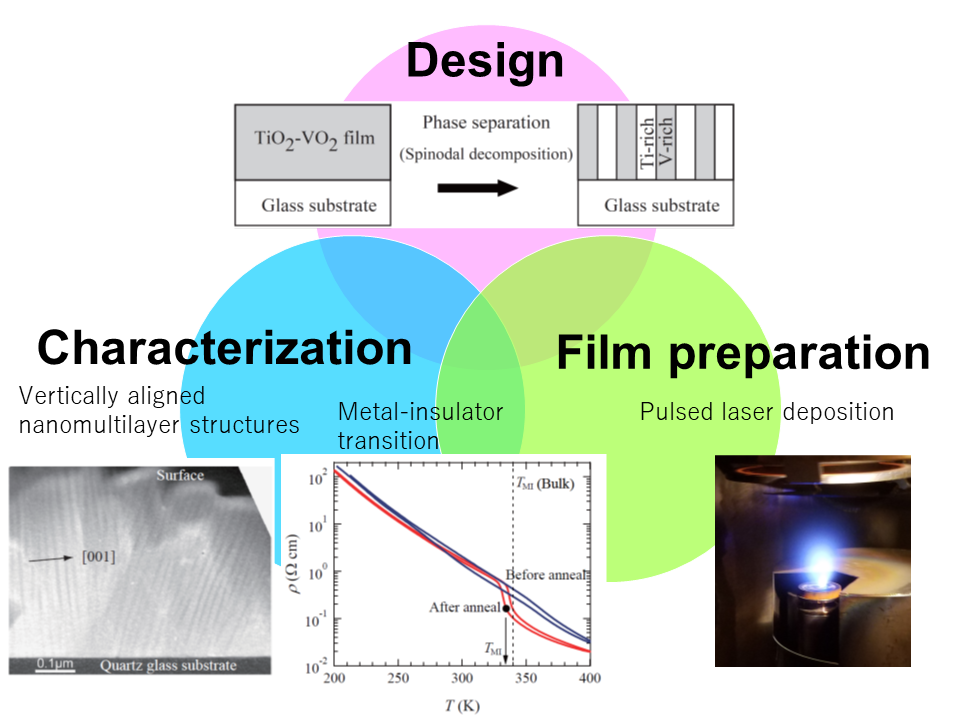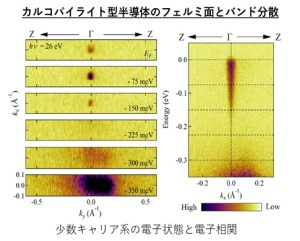Physics of Solid Surfaces and Interfaces
The properties (functionality) of a solid are determined by the states of electrons (energy, momentum and spin). Clarifying the electronic states experimentally leads to elucidating the origin and/or mechanism of the functionality and gives the strategy to improve the functionality. We are conducting research to investigate electronic states in materials in detail using advanced electron spectroscopy techniques.
We focus on the research for the preparation of nanostructured thin films and development of new functional thin films. Self-organized nanostructured films are what we are interested in. As for functional thin films, our target is materials that exhibit superconductivity and metal-insulator transition. We also conduct research to evaluate the quality of the thin films and elucidate the mechanism of function in the films through experiments on the electronic states.
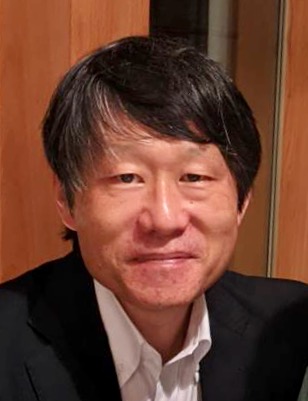 |
|
|---|
Half-metal is a material that can generate electric currents with aligned electron spins, and is one of the important materials in spintronics. We studied electronic states of half-metals using spin-resolved photoemission spectroscopy, and found that electron-electron interactions differ greatly for each spin state. This result indicates the need to consider spin-dependent electron correlation effects in device design in spintronics.
 |
|
|---|
Spontaneous Formation of nano-multilayered structures via phase separation (spinodal decomposition) in TiO2-VO2 films has been achieved. We have also succeeded in occurring metal-insulator transition characteristics in the multilayered films.
For functional thin films, we are fabricating the allotrope of carbon, Q-carbon. We firstly succeeded in reproducing this material, and are currently conducting research toward the development of ferromagnetism and high-temperature superconductivity.
 |
|
|---|
In a material, approximately 10²³ atoms are regularly arranged per cubic centimeter, and the numerous electrons associated with them interact with one another, resulting in an astonishing variety of properties. Under certain conditions, highly ordered states—such as superconductivity, magnetism, or charge and orbital ordering—emerge, which are difficult to imagine given the tremendous number of particles involved. Our research aims to understand such phenomena using photoemission spectroscopy, a technique that allows for direct observation of the electronic states of materials, in order to uncover their latent potential
Fermi surface and band dispersion observed
by angle-resolved photoemission spectroscopy

